Fall Math Topics
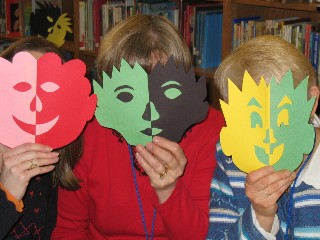
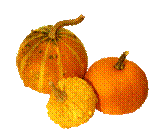

Fall Math Activities
Fall ushers in the seasonal holidays and classroom teachers and students are eager to capture the spirit of the holidays. It is very easy to incorporate mathematical concepts and skills built around these common themes. Whatever concept your class is currently developing, there are fun ways to incorporate math: estimation, measurement, basic facts, problem solving, discrete math, probability, graphing, data collection, geometry, etc.
When planning seasonal activities, be sure that the activity is mathematically rich and supports student learning or provides additional practice of basic facts and other skills. Sneak in some seasonal problem solving and introduce some seasonal games in the math center. Seasonal math activities can and should be more than pumpkins on a worksheet.
Standards/Objectives: The Fall 2008 collection is organized by Standards/Objectives to make it easier for teachers to coordinate activities to match current units of learning. Here are some suggestions for including seasonal themes in your regular mathematical lessons. Be sure to also check the other  Mathwire Fall collections for additional activities, games and problem solving.
Mathwire Fall collections for additional activities, games and problem solving.

EstimationEstimation Station: Establish a regular center in the room which changes weekly. A simple clear plastic container is filled with different items each week. These items should vary in size to challenge students' developing concept of volume, as it relates to smaller or larger units. Use seasonal items: acorns, leaves, candy corn, popcorn kernels, pumpkin seeds, etc. to spark student interest. Keep a class journal of these activities in which students may record their estimates. Record the item and the actual count along with a digital picture, if possible, of the container and the student(s) whose estimates were closest. Some classes involve parents by asking for volunteers to send in appropriate items to be counted. It is important to use the same container for several weeks so that students build an understanding that size matters in estimating how many items there are in the jar.
|
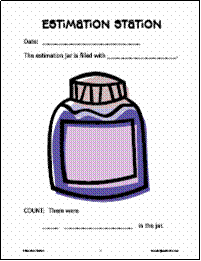
|

|
Math-Literature Connection - Estimation: The Biggest Pumpkin Ever by Stephen Kroll would be a great literature connection for a Huge Pumpkin Estimation Station or to introduce a class pumpkin sorting activity.
|
|
Math-Literature Connection - Estimation: The Candy Corn Contest by Patricia Reilly Giff would be a great literature connection for a Candy Corn Estimation Station, as described in the book. The sneaky teacher in this story required that students read a page in a library book for each guess they submitted. Math teachers might vary this requirement to include some fun math practice as a way to earn guessing rights. Either way, incorporating the actual candy corn jar estimation is a great seasonal variation of the Estimation Station described above. |

|

Measurement
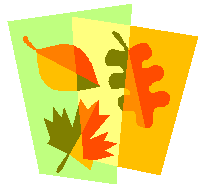
- AREA of Leaves: this student provides practice in finding the area of irregular figures.
- Take students on a leaf gathering excursion, if possible, to gather different kinds and sizes of leaves. Or, provide an assortment of leaves for students to use.
- Ask each student to select one leaf and trace it carefully onto construction paper.
- Have students place one color tile or unifix cube on their leaves. Challenge them to predict how many color tiles or unifix cubes will fit on their leaves,
- Ask students to write their prediction in crayon in the upper left corner of their papers.
- After the prediction, students may continue placing tiles or cubes onto their leaves until they are completely covered. NOTE: Establish classroom rules for whether the tile must completely fit, may hang off less then 1/2, etc. to fit the mathematical level of your students.
- Ask students to count the actual number of tiles or cubes and write that number in crayon in the upper right hand corner of their papers.
- Repeat this activity by having students select a different leaf.
- Ask them to predict whether their new leaves will fit fewer or more tiles or cubes than their first leaves and ask a few students to explain their reasoning
- Let students work independently to complete the second leaf.
- OPTIONAL: Have student groups order their leaves from smallest to greatest areas. Provide time for students to discuss this arrangement.
- PERIMETER of Leaves: Have students use string or yarn to measure around the outside of their leaves, after estimating the perimeter in inches or centimeters. Use a ruler to measure the string in inches or centimeters and mark this on the paper as well. This activity provides practice in measuring the perimeter of irregular objects.
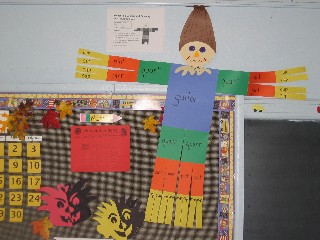
|
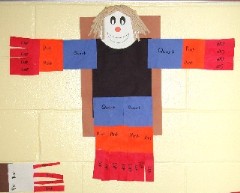
|

|
- Measurement Man: Create
 Measurement Man scarecrows to visually represent the relationship between gallon, quart, pint, cup. This conceptual image provides a visual body cue when students need to use these references in the future or on state testing.
Measurement Man scarecrows to visually represent the relationship between gallon, quart, pint, cup. This conceptual image provides a visual body cue when students need to use these references in the future or on state testing.
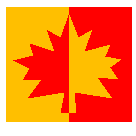
|

Symmetry
|
|
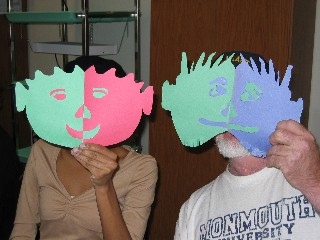
|

Coordinate GraphingCoordinate Graphing Art: These activities require students to use coordinate pairs to correctly color in the squares of the grid to create a fall picture.
|
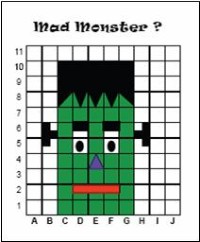
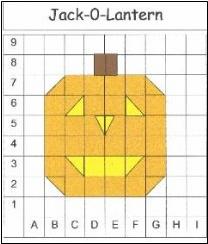
|
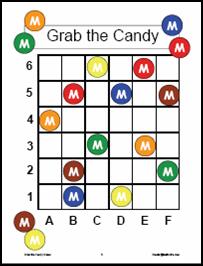
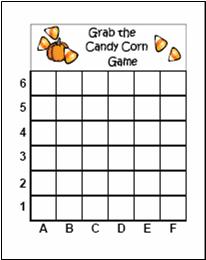
|
Coordinate Graphing Games:
|

Probability
|
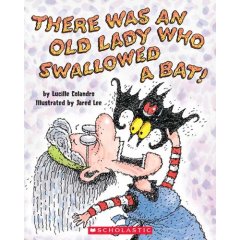
|
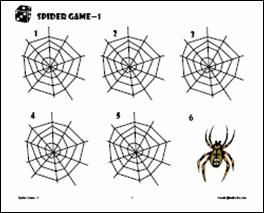
|
Play math games to develop students' conceptual understanding of probability. Have students collect data, analyze the data, graph the data and write about their findings. Provide time for students to play games several times so that they are able to use their knowledge of probability to better control the outcome.
|

Patterns

The credit goes to Rutgers Discrete Math Program for initiating the Pascal's Triangle activities for elementary students. Pascal's Pumpkins and Pascal's Ghosts are reproductions ofsamples from this initiative. The others are seasonal variations also built on this famous pattern. The PDF files contain student worksheets, directions, answer sheets with explanations for teachers to help students discover some of the patterns in this famous triangle.
- Download
 Pascal's Pumpkins.
Pascal's Pumpkins.
- Download
 Pascal's Ghosts: How Many Ghosts Do You See?.
Pascal's Ghosts: How Many Ghosts Do You See?.
- Download
 Pascal's Bats.
Pascal's Bats.
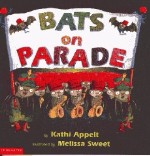
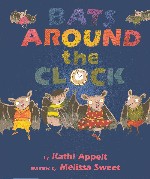
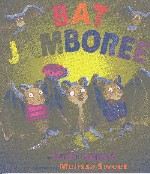
|
Math-Literature Connection - Patterns: See
|

Fall Problem Solving
Consider writing your own Halloween word problems incorporating your students' names and requiring students to apply concepts and skills they are currently learning or need to practice. Students are strongly motivated by seeing their names and classmates' names. They might even write some of their own problems, demonstrating higher-order thinking skills in the process.
- Check out the
 Halloween Word Problems written by Tammie Holcombe and Karen Zeigler, second grade teachers at Port Monmouth Road School in Keansburg, NJ.
Halloween Word Problems written by Tammie Holcombe and Karen Zeigler, second grade teachers at Port Monmouth Road School in Keansburg, NJ.
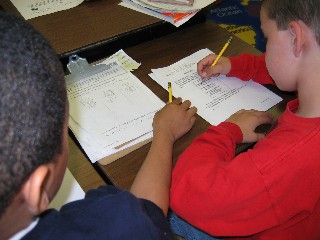
|
The following open-ended assessments require students to apply mathematical concepts and skills to solve problems and explain their thinking using words, pictures and numbers.
|
|
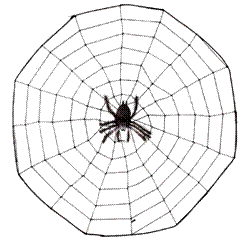
|

|
|

Fall Math-Literature Connections
Many books may be used as a springboard for mathematical discussions and activities. These are included to integrate fall themes into mathematics:

There Was an Old Lady Who Swallowed a Bat by Lucille Colandro
- After reading the book, investigate
 Batty Old Lady Probability, Students spin to collect all of the items the Batty Old Lady swallowed, and tally each spin on the recording sheet. They then calculate the total spins it took them to get all 7 items, and add that figure to the class data. Teachers may help students analyze the class data and learn about probability in the process. The pdf document includes directions, game mat, picture cards, spinner, recording sheet and writing to learn handout.
Batty Old Lady Probability, Students spin to collect all of the items the Batty Old Lady swallowed, and tally each spin on the recording sheet. They then calculate the total spins it took them to get all 7 items, and add that figure to the class data. Teachers may help students analyze the class data and learn about probability in the process. The pdf document includes directions, game mat, picture cards, spinner, recording sheet and writing to learn handout.
- Download
 Old Lady template to use in retelling the story
Old Lady template to use in retelling the story
- After reading, enjoy the original There Was an Old Lady Who Swallowed a Fly book, enjoy the
 Old Lady and Probability lessons.
Old Lady and Probability lessons.
- Use the
 Old Lady reproducible for students to design their own versions of the story.
Old Lady reproducible for students to design their own versions of the story.
- Use Scholastic's
 Edible Estimation suggestion to incorporate measurement into this book talk. Scroll down the Scholastic page to locate this section.
Edible Estimation suggestion to incorporate measurement into this book talk. Scroll down the Scholastic page to locate this section.

|
The Very Busy Spider by Eric Carle
|
|
Ten Apples Up on Top by Theo Le Sieg After enjoying the book, and counting the apples on the various pages, have students create counting booklets with a page for each number 1-10. They may draw that many apples on their head.
|

|

|
Create the fall sequel booklet, |

Themed Math Activities
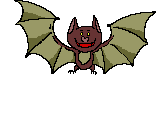
These activity collections are designed around common themes. These math activities coordinate with math-literature or science units of study. Consider adding some of the activities to your math center, or use games on game day to extend the themed approach to math time. Each collection includes a variety of activities such as math-literature connections, games, counting and addition mats, problem solving, data collection, and probability.
- The Mathwire
 Bats collection includes Pascal's Bats, graphing ideas, Math-Literature connections, the Fat Bat game, bat problem solving and bat links.
Bats collection includes Pascal's Bats, graphing ideas, Math-Literature connections, the Fat Bat game, bat problem solving and bat links.
- The Mathwire
 Spiders collection includes a spider web math mat, name collection spiders, spider glyphs, spider graphing, Math-Literature connections, Catch the Spider Game, Spider Game-1, Spider Game-2, Spider Web Map Coloring Game, Insect and Spider problems and spider links.
Spiders collection includes a spider web math mat, name collection spiders, spider glyphs, spider graphing, Math-Literature connections, Catch the Spider Game, Spider Game-1, Spider Game-2, Spider Web Map Coloring Game, Insect and Spider problems and spider links.
- See all Mathwire
 Math Activity Themes which presently include Gingerbread Men, Penguins, Quilts and Snowmen.
Math Activity Themes which presently include Gingerbread Men, Penguins, Quilts and Snowmen.

Seasonal Counting & Addition Mats
Seasonal mats are a welcome addition to the classroom math center. Teachers may use these in a number of ways to help students master math skills. Read more about using math mats in the Mathwire  Math Mats Resources which includes using place value mats, seasonal mats, domino mats and fact family mats.
Math Mats Resources which includes using place value mats, seasonal mats, domino mats and fact family mats.
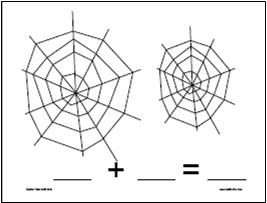
|
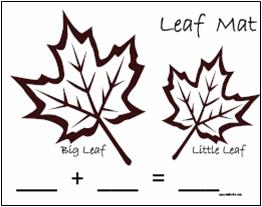
|
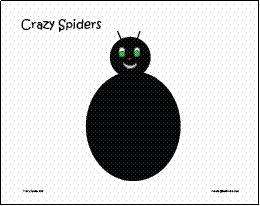
|
 Spider Web Mat: students may use play spiders or spider rings to model addition stories on this spider web math mat. Spider Web Mat: students may use play spiders or spider rings to model addition stories on this spider web math mat.
|
 Leaf Mat: students may use available manipulatives to model addition stories on the leaf. Insect or ladybug counters would work well with this theme. Leaf Mat: students may use available manipulatives to model addition stories on the leaf. Insect or ladybug counters would work well with this theme.
|
 Crazy Spider Mat: students use small pipe cleaner legs to create crazy spiders. First die roll tells student how many legs to add to one side of the spider. The second die roll tells students how many legs to add to the other side of the spider. How many legs does his/her spider have in all? If it's not 4 on each side, then the student has created a Crazy Spider. Crazy Spider Mat: students use small pipe cleaner legs to create crazy spiders. First die roll tells student how many legs to add to one side of the spider. The second die roll tells students how many legs to add to the other side of the spider. How many legs does his/her spider have in all? If it's not 4 on each side, then the student has created a Crazy Spider.
|
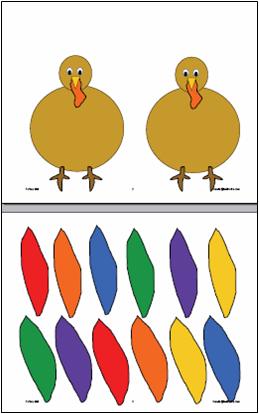
|
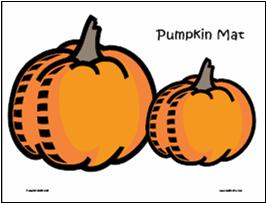
|
|

Fall Glyphs
Each of these glyphs capture data about students in a visual mode. Students should analyze the class data by creating tally charts, Venn diagrams, bar graphs, etc. and writing about what they learned from looking at the glyphs of their classmates.
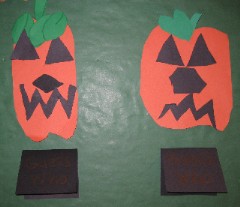
|
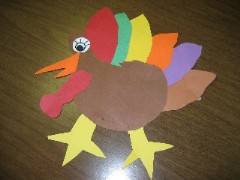
|
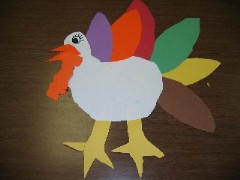
|
- Check out Shari Sloane's outstanding
 Glyphs Resource page for pictures of glyphs, pdf handouts of glyph legends and math-literature book connections for all seasons. The collection includes a scarecrow glyph, apple glyph, pumpkin glyph, haunted house glyph, turkey glyph and owl glyph.
Glyphs Resource page for pictures of glyphs, pdf handouts of glyph legends and math-literature book connections for all seasons. The collection includes a scarecrow glyph, apple glyph, pumpkin glyph, haunted house glyph, turkey glyph and owl glyph.
-
 Jack-o-Lantern Glyph from Mathwire.com Fall 2006 Math Activities collection.
Jack-o-Lantern Glyph from Mathwire.com Fall 2006 Math Activities collection.
-
 Scarecrow Glyph
Scarecrow Glyph
-
 Jack-o-Lantern Glyph
Jack-o-Lantern Glyph
-
 Witch Glyph
Witch Glyph
-
 Turkey Glyph
Turkey Glyph
- See
 Owl Glyph: scroll down to the bottom of the page for pictures and pdf files
Owl Glyph: scroll down to the bottom of the page for pictures and pdf files
-
 Haunted House glyph: scroll down page for pictures and pdf files
Haunted House glyph: scroll down page for pictures and pdf files
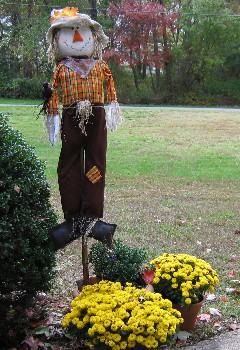
|

More Mathwire Seasonal Math ActivitiesThese math activities collections are organized by seasons. Elementary teachers often incorporate seasonal activities as craft projects. Many of these seasonal craft projects can be mathematical as well with a little forethought. Browse the activities for projects to add that reinforce mathematical concepts and skills through seasonal and holiday themes.
|

